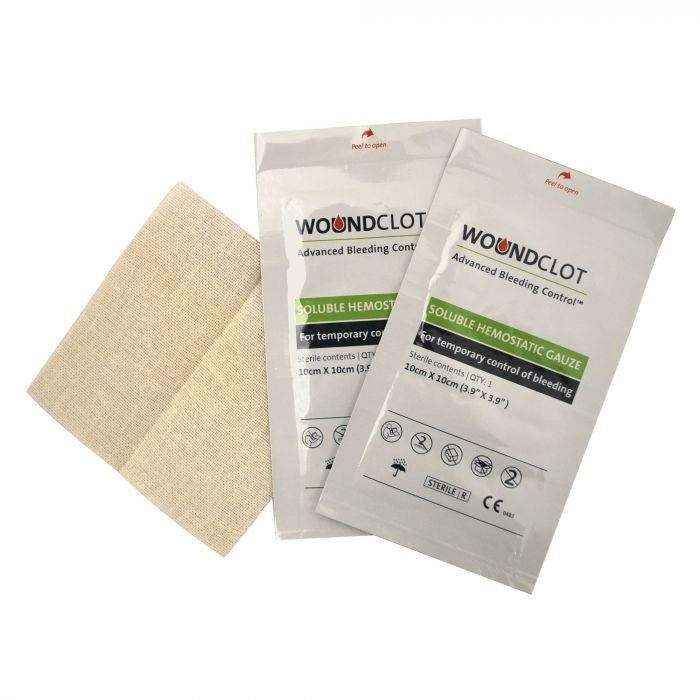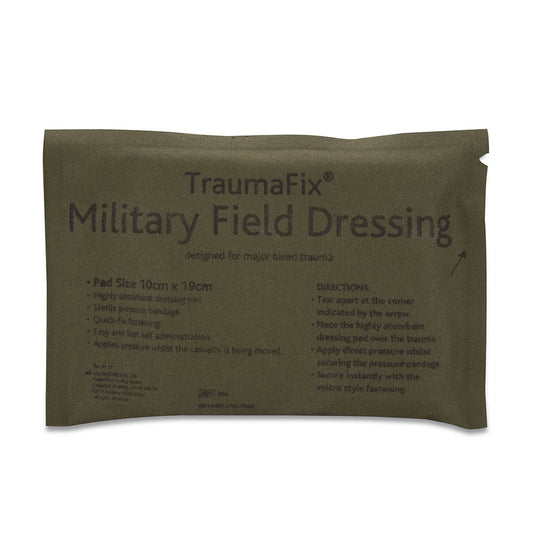
This WoundClot ABC (Advanced Bleeding Control) 10cm x 10cm Haemostatic Gauze Dressing is a bio-absorbable, non-compressional and cost-effective haemostatic gauze made of non-oxidised cellulose which can be fabricated into a variety of forms suitable for use in the control of bleeding on a wide range of wounds. Small and compact, WoundClot ABC can be used by non-trained personnel and is ideal for First Aid and First Responder use.
Scientifically designed to create a haemodynamic gel environment, WoundClot absorbs large amounts of coagulants while adhering to the wound, thus controlling bleeding effectively.
Offering a rapid and sustained haemostatic effect helping to preserve the wound site for clinical treatment, the absorption capabilities of WoundClot is over 2500% its own weight. WoundClot can also be used effectively under anti-coagulation treatments.
After bleeding has stopped, the remaining residual membrane can be irrigated out of the wound safely without pulling on soft tissue or disrupting the existing clot.
Benefits of WoundClot ABC:
- Can be used by non-trained personnel
- Ideal for use by First Aid and First Responders
- Non-compressional application
- Enhances and accelerates the natural clotting process
- Strong self-adherence
- Quick and easy to apply
- High absorption capabilities (over 2500% its own weight)
- Used for the control of bleeding on a variety of wounds
- Can be used on non-compressional areas
- Small and compact
- Cost-effective
- Can be removed without disruption to the wound site
- Works under anti-coagulation treatments
Features of WoundClot ABC:
- No cytotoxicity sensitisation or irritation of skin
- Non-exothermic
- Class IIb device
- CE marked
- FDA approved
- Single use
- Sterile
How does WoundClot work?
On contact with blood or exudate, the molecular structure of WoundClot ABC gauze changes to becomes a viscous gel which adheres to the wound and not only activates but also enhances and accelerates the natural clotting system. This gelatinous membrane creates a mechanical barrier to immediately reduce blood flow. Platelets from the injury then attach to the formed gel by inter-molecular forces to form a stable membrane, which is able to withstand severe arterial and venous blood flow for hours.
Specific molecular groups, created in the manufacturing process, interact with the blood ingredients during gel formation to activate various coagulation factors, thus helping to form a physiologically natural biological clot in the wound.
PLEASE NOTE: For moderate and severe traumatic bleeding, please see WoundClot Trauma.


